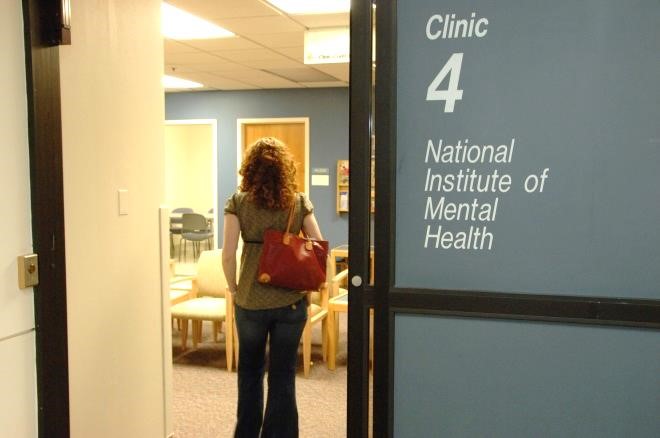By Martin D. Schwartz
Sexual assault has for 30 years been a fascinating field of study, both in terms of academic inquiry and campus politics. The field began almost 60 years ago when Clifford Kirkpatrick and Eugene Kanin (1957) argued that as many as 20 percent of college women experienced attempted or completed rape during just one academic year. This finding was of course ignored. Nearer to 40 years ago, one could still write an exhaustive bibliography on a couple of index cards, but we have now been treated to an explosion of studies published in journals and books.
By the mid-1980s, researchers were exposing and getting extensive publicity for studies showing high levels of what was then called “date rape.” While this energized many feminist communities, it was disregarded in mainstream academia and often drowned out by backlash politics – mainly by people who had no data but who got top space for claiming that academic researchers were “biased.” This drumbeat continues today.
Prevalence and Incidence
Meanwhile, the explosion of data continues. For example, Kate Carey et al., in the June, 2015 issue of the Journal of Adolescent Health report on a health study of first-year college women. More than one in seven women reported being the victim of attempted or completed incapacitation rape (committed while under the influence of drugs or alcohol and unable to resist), and one in ten reported surviving attempted or completed forcible penetration.
This was a careful study of only the first 12 months of a traditional college. When pre-college experience is added, from the age of 14 through the beginning of the sophomore year, 37 percent of these women had experienced attempted or completed incapacitation or forcible rape. We have often found that studies asking about criminal acts uncover smaller amounts of such assaults, while those done by health authorities asking about specific behavior turn up higher numbers.

Source: U.S. Federal Bureau of Investigations https://www.fbi.gov/stats-services/publications/campus-attacks.
None of this is news to college leaders. Inside Higher Education (in conjunction with Gallup pollsters) reported on a survey where the majority of 647 responding presidents of American colleges and universities conveyed a concern over the high frequency of sexual assault at U.S. colleges and universities. Only 28 percent disagreed with the statement that sexual assault is prevalent at American colleges and universities. Luckily for their students, however, this widespread incidence of sexual assault was only taking place on other campuses. Seventy-eight percent of these same campus leaders disagreed that their own campus had this problem. It’s everyone but us.
Given the numerous and repeated survey results and extensive attention to this issue, how is it that most college presidents can believe that they don’t have a problem? One explanation could be based on the analysis of Washington Trinity’s President Patricia McGuire: “They’re kidding themselves” (Lederman, 2015).
Many who have worked in this field for years might be tempted to suggest that the denial is more purposive. Others, more generous, argue that the job of the president is to be a cheerleader for their own campus, seeing everything through rose-colored glasses. What, me worry?
Normative Violence
My personal experience has led me to the cynical position of suspecting widespread purposive denial. A news bureau chief on his last day on the job told me that he had been under orders never to publicize articles studying campus sexual assault, because the administration felt that if parents knew that sexual assault was taking place on the campus they would withdraw their daughters. I have lectured or taught or researched in a number of states and countries around the globe, and never fail to be amazed at how many people have denied to me that this is a problem, or explained to me that “women commonly lie about sexual assault. That can’t happen at our school. Our police would never brush off a victim.”
“I’m friends with the student affairs dean, and it is impossible that he would treat a victim like that…She was tagged on Facebook with a picture of herself at a party only a week after the alleged rape, which rape victims never do.”
The last was told to me by the faculty representative on a panel that dismissed charges against a young man because “the Facebook picture proved that the report was a lie. After all, no rape victim has ever gone out and gotten drunk after being raped.”
My writing partner, Walter DeKeseredy and I have keynoted conferences and commonly have found men’s rights advocates eager to explain to us that the real criminals in domestic violence cases are the females that we thought were victims.
Personally I don’t like the practice of claiming that there is an epidemic today of sexual assault on American college campuses. What is going on today isn’t at all an epidemic. It is normative violence that has been and continues to be ignored by some. All that is different today is that a slightly larger proportion of men and women are concerned about the problem, and a slightly larger percentage of survivors are speaking out or making complaints.
There is no evidence to suggest that sexual assault is more prevalent today than before (partially because there is no solid base line data), and reason to believe that their grandmothers and great-grandmothers faced the same problems if they went to college.
What is new about current claims are the number of women willing to go public with stories about how they reported a sexual assault and were ignored, or compelled not to press charges, or treated badly or paternalistically, or even threatened.
For many years, we have acted as if the official Clery Reports had some relation to empirical reality, when we knew that they are underreported; even today, one-third of all colleges report absolutely no sexual assault on their campus. (The Clery Reports are submitted by colleges to the federal government to report the number of sexual assaults on campus.)
Just as one example, at a time when one campus was reporting consistently about 4 sexual assaults per year (on a campus with 20,000 students), I did a victimization study of 388 undergraduate women (out of perhaps 8,500 on that campus) and uncovered 65 who reported that they had experienced sexual aggression that would be defined by state law as felony forcible rape.
Just like Kilpatrick and Kanin’s respondents from the 1950s, none had reported the event to authorities. Almost all reported serious psychological and emotional repercussions, but again just like the 1950s, women accepted partial or full blame for the attacks, for not being better gatekeepers (Schwartz & Leggett, 1999).
Most Helpful Person
All of which leaves us with questions. Why do women often take the blame for men’s bad behavior? Why do men engage in sexual aggression against women? Why do men and women excuse this behavior, hide it, or ignore it?
As a sociologist, I would be remiss if I didn’t mention the pressures of society at large, and the people around us in particular. While there has been quite a lot of attention to the notions of a rape culture, or a paternalistic state, there has been relatively less attention to the role of the people we know well, who surround us.
One example of the effect of friends and family was shown in a study of self-blame. After identifying a group of women, all of whom reported that they had experienced aggression that fit the description of felony rape, we asked them to tell us who was the most helpful person afterwards, and what they said. Some were told it wasn’t their fault; that it would have happened to anyone in that time and place.
The rest were told they were to blame (e.g., being on the wrong street, no escort, etc.) but that they were loved and supported. Recall, these were the most helpful people. When asked at another part of the survey if they had ever been raped, every single person who had been told it wasn’t their fault, without exception, said yes, they had been raped. Every single person, without exception, who had been told it was their fault, said that they had never been raped. In other words, women who have been told by their peers or parents that they are at fault for not preventing their own victimization are less likely to categorize their experience as rape and therefore less likely to seek counseling or other forms of help.
This not only reinforces a societal norm that women are responsible for the bad behavior of men, but as we said at the time, “it even takes away their right to be angry about it” (Schwartz & Pitts, 1993: 396).
Male Peer Support
That leaves us with the question of why men are sexually aggressive. This has been the subject of my work with Walter DeKeseredy over the past 25 years, (DeKeseredy & Schwartz, 2013). Male Peer Support Theory suggests that much of the impetus to violence against women is social.
Since we began these studies in the 1980s, we have defined male peer support as attachments to male peers and the resources these men provide that encourage and legitimate woman abuse.
This theory firmly situates male aggression within society itself. Of course, inside a structure that has often been called a “rape culture,” there are numerous media, political, religious and familial threads that support, protect or ignore violence against women.
We have found that a powerful medium of transmission of these values has been peers, and particularly male peers among youth. For example, our largest study was the Canadian National Survey funded by Health Canada that used a representative sample of 3,142 undergraduates from 43 colleges and universities from coast to coast. Among many other items, we asked men if they had ever committed several behaviors, one of which was a description of forcible rape.
We asked a series of questions to develop an index of the extent to which a man’s friends supported the emotional abuse of women, and a second set to develop an index of how much friends supported the physical abuse of women.
Finally, we asked about the man’s use of alcohol. What we found was that men who went out drinking two or more times a week, and had friends who supported both emotional and physical abuse, were 9.6 times as likely to admit to forcible rape as men who had none of the above (Schwartz & DeKeseredy, 1997). Since that time, we have repeatedly found, as have other sociologists, that these factors tell us which men will be sexually aggressive toward women.
Other factors include membership in men’s organizations, such as sports teams, fraternities, residence halls or other groups, some of which foster the sexual objectification of women and promote a narrow conception of masculinity (“a real man is one who is athletic, has money, is sexually successful, exhibits machismo, and can hold his alcohol well.”)
None of these characteristics are unknown on the typical college or university campus among all-male groups. Another factor was the absence of deterrence or punishment for male aggressors.
Proposed Solutions
Interestingly, most proposed solutions to those problems involve women.
Popular “solutions” include blue light phones for women to use, self-defense classes, escort services, lectures on awareness, staying relatively sober, and avoiding evening classes, library events, or unmonitored drinks. In other words, the typical response to the possibility of attack from friends and acquaintances is to provide protection from strangers. These strategies have not been effective enough.
Much more important is that because the problem is male friends and acquaintances, the solution will have to come from men. Women don’t need the protection of men as much as they need men to work to change the culture of other men.
Groups like Men Can Stop Rape, MenEngage, and the White Ribbon Campaign have begun the process of changing male peer support norms, speaking out as men to other men. They give out the message that sexual harassment, rape, misogynist jokes, date rape and other forms of sexual aggression are not humorous expressions of boys will be boys, but rather are criminal aggressions against women and other men, and that it will not be tolerated.
References
- DeKeseredy, Walter S. and Martin D. Schwartz, 2013. Male Peer Support and Violence Against Women: The History and Verification of a Theory. Boston, MA: Northeastern University Press.
- Carey, K.B., Durney, S.E., Shepardson, R.L. & Carey, M.P. (2015). Incapacitated and Forcible Rape of College Women: Prevalence Across the First Year. Journal of Adolescent Health 56: 678-680.
- Jascik, S. & Lederman, D. (2015). The 2015 Inside Higher Ed Survey of College & University Presidents. www.insidehighered.com.
- Kirkpatrick, C. & Kanin, E. (1957). Male Sex Aggression on a University Campus. American Sociological Review, 22: 52-58.
- Pitts, V.L. & Schwartz, M.D. Promoting Self‑Blame Among Hidden Rape Survivors. Humanity & Society, 17: 383‑398.
- Schwartz, M.D. and DeKeseredy, W.S. (1997). Sexual assault on the college campus. Thousand Oaks, CA: Sage.
- Schwartz, M.D. and Leggett, M. (1999). Bad dates or emotional trauma: The aftermath of campus sexual assault. Violence Against Women, 5: 251-271.






